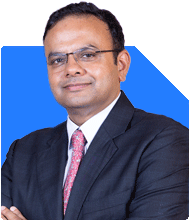Sir i have Parag Parikh Flexicap, Sbi Mid cap & Axis Small cap fund each with 5k total 15k per month sip for 25 year's and 10 percent step up every year I want 10 crores for my retirement, is this portfolio Good..? I am 33 year's old ????
Ans: It is great that you have a well-structured SIP plan in place for your retirement. Starting early gives you a significant advantage, as your investments will benefit from compounding over time. Your goal of accumulating Rs 10 crores by retirement at 33 years of age is both ambitious and achievable with the right strategy.
However, let us take a 360-degree view of your portfolio and evaluate it across multiple parameters.
1. Diversification of Portfolio
You have invested in Flexi-cap, Mid-cap, and Small-cap funds. This diversification across different market capitalizations is smart because:
Flexi-cap funds invest across all types of companies, ensuring flexibility in capturing growth from various sectors.
Mid-cap funds focus on companies that have significant growth potential, though they may carry higher volatility.
Small-cap funds are riskier but can yield high returns over a long horizon.
However, your portfolio seems tilted toward higher-risk categories (mid-cap and small-cap). Although it increases potential returns, the volatility could cause significant short-term fluctuations. You may want to ensure some allocation in large-cap funds, which offer stability. Large-cap funds perform well in market downturns, helping cushion your portfolio's overall risk.
Insight: Adding a large-cap component or hybrid funds could bring more balance and reduce volatility in market downturns.
2. SIP Step-Up Strategy
Your decision to step up SIP contributions by 10% each year is a solid plan to combat inflation and meet long-term goals. Stepping up ensures that you keep increasing investments as your income grows, which will be essential in reaching your Rs 10 crore target.
Insight: Continue increasing your SIPs consistently. Ensure that your step-up rate matches your income growth to keep pace with rising expenses.
3. Regular vs Direct Funds
You have mentioned your investments but not the type of funds—whether they are direct or regular. It is worth noting that direct funds come with lower expense ratios but require active monitoring.
If you are going through a Certified Financial Planner (CFP), it is better to opt for regular funds. A CFP can guide you based on market conditions and financial goals. They help optimize your returns while ensuring disciplined investing.
Insight: Direct funds may seem attractive with lower fees, but without professional advice, you could miss out on timely rebalancing. Regular funds, invested through a trusted CFP, ensure more personalized management of your portfolio.
4. Assessing 25-Year Horizon for Rs 10 Crores
Your portfolio's return will depend on the market performance over the long term, and the funds you have selected generally aim for higher growth. Historically, equity mutual funds, particularly small-cap and mid-cap funds, have offered high returns but with more volatility. While 10% step-up and 25 years of disciplined investing create strong prospects for achieving Rs 10 crores, you will need to:
Monitor performance periodically: Your funds need periodic rebalancing to align with market conditions. If any underperform, you may need to switch to better-performing funds.
Account for taxation: The Long Term Capital Gains (LTCG) tax on mutual funds is an important factor to consider. For equity mutual funds, LTCG above Rs 1.25 lakh is taxed at 12.5%, while Short Term Capital Gains (STCG) are taxed at 20%. As your portfolio grows, the tax liability will also increase.
Insight: Be aware of tax impacts on your withdrawals closer to retirement, and consider switching funds if needed to ensure optimal returns.
5. Consideration of Market Conditions
The performance of mid-cap and small-cap funds is heavily reliant on market conditions. In bull markets, these funds tend to outperform, while in bear markets, they can drop significantly.
Equity market volatility: Over 25 years, you will likely see both significant market booms and corrections. Having a strategy in place to weather market downturns is crucial.
Focus on consistent investing: Avoid timing the market or making impulsive changes during market corrections. Continue your SIPs during both bullish and bearish phases, as this will average out the buying price of your units.
Insight: Consider market downturns as opportunities to accumulate more units at lower prices through SIPs. Resist panic selling during corrections.
6. Flexibility and Adjustments Over Time
You have 25 years until retirement, which is a long horizon. In that time, your financial situation, risk tolerance, and market conditions will change. It is essential to:
Review and rebalance annually: At least once a year, review your portfolio with your CFP to ensure it aligns with your goals and adjust based on performance.
Reallocate closer to retirement: As you approach retirement, move some of your investments into safer assets (like large-cap funds or hybrid funds) to lock in the gains you have made and protect against volatility in the final years.
Insight: Flexibility in your financial plan is key. Revisit and adjust your portfolio regularly to ensure it continues to meet your long-term objectives.
7. Inflation Impact on Retirement Corpus
While Rs 10 crore seems like a large amount today, inflation will reduce its purchasing power by the time you retire. The expenses that Rs 10 crore can cover today will be far less 25 years later. Keep this in mind as you plan your target corpus.
Retirement income needs: You should calculate your future monthly expenses, keeping inflation in mind. If your goal is Rs 10 crore, assess whether that corpus will be enough to generate the monthly income you need in retirement.
Plan for inflation protection: As you age, inflation will continue to impact your purchasing power. Ensure part of your corpus is invested in assets that beat inflation.
Insight: Focus on inflation-adjusted returns rather than absolute numbers. Consider increasing your retirement target if inflation erodes purchasing power significantly.
8. Long-Term Wealth Creation Strategy
Building a Rs 10 crore corpus requires discipline, consistency, and strategic investing. A few additional points to consider:
Diversify across assets: Although equity mutual funds offer growth, you should ensure you have a broader asset mix to reduce risks.
Use goal-based investing: Allocate specific funds for retirement and avoid mixing it with other financial goals.
Emergency fund: Always maintain an emergency fund with 6-12 months' worth of expenses. This will ensure you do not have to break your SIPs in case of emergencies.
Insight: Stick to long-term wealth creation by being consistent with your SIPs, managing risks, and ensuring a clear focus on your retirement goals.
Final Insights
Your portfolio is well-thought-out, with a strong SIP strategy that can lead to substantial wealth creation over 25 years. With regular reviews, a focus on diversification, and disciplined investing, you are on track to achieve your Rs 10 crore retirement corpus.
However, consider adding a large-cap component for stability, and review your risk tolerance as you move closer to retirement. Keep in mind the impact of inflation, taxation, and the need for flexibility in your portfolio.
Stay committed to your SIPs, but also ensure you are periodically revisiting your strategy with the help of a Certified Financial Planner to stay aligned with your long-term objectives.
Best Regards,
K. Ramalingam, MBA, CFP,
Chief Financial Planner,
www.holisticinvestment.in
https://www.youtube.com/@HolisticInvestment


























